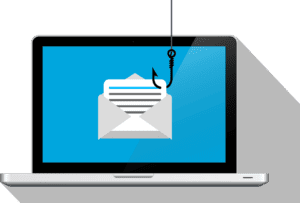Running a successful business nowadays requires more than just a great product or service. With more businesses embracing the benefits of the digital world, potential cyber threats that target businesses are on the rise. One of the most insidious threats facing business owners today is social engineering. But what exactly is social engineering, and how can businesses both recognize and defend against it?
Read on, as we’re about to define social engineering and uncover the common tactics cybercriminals are using, while also providing practical tips to help safeguard your business against these cunning attacks.
What Is Social Engineering?
Social engineering is the art of manipulating people into divulging confidential information or performing actions that could compromise security. Unlike traditional hacking methods that focus on exploiting technical vulnerabilities, social engineering preys on the human element. Hackers exploit psychological weaknesses to gain unauthorized access to sensitive information or systems.
Think of it this way: instead of hacking the data itself, social engineering “hacks” into the minds of the victims—in this case, your employees—and uses them to gain access to your business’ data.
Common Social Engineering Tactics
The most common social engineering tactics you and your employees should be on the lookout for are the following:
Phishing Attacks
Phishing is like the chameleon of social engineering tactics because it constantly adapts and evolves. Hackers use deceptive emails, messages, or websites to trick individuals into revealing sensitive information such as login credentials or financial details. These messages often appear legitimate, imitating trusted entities like banks, government agencies, or even colleagues.
To guard against phishing attacks, educate your employees about the telltale signs of phishing emails. Encourage them to double-check the sender’s email address, scrutinize the content for inconsistencies, and avoid clicking suspicious links. Implement robust email filtering tools to catch potential phishing attempts before they reach your employees’ inboxes.
Pretexting
Pretexting involves creating a fabricated scenario to manipulate individuals into disclosing confidential information. Hackers may pose as co-workers, vendors, or even managers to extract sensitive data. This tactic relies heavily on the target’s willingness to help or comply with seemingly legitimate requests.
Establish clear communication protocols within your organization to help protect against this tactic. Encourage employees to verify the identity of anyone requesting sensitive information, especially if the request seems unusual. Implement strict access controls and regularly review permissions to limit the information accessible to each employee.
Baiting
Baiting involves enticing individuals with something appealing, like a free software download or a tempting link, to lure them into revealing confidential information or installing malicious software. These baits often masquerade as harmless files or links, exploiting the curiosity or greed of the unsuspecting victim.
Train your employees to exercise caution when encountering unexpected offers or downloads, and you’ll keep your business safe from this social engineering tactic. Encourage them to verify the legitimacy of any enticing links or files by checking with IT or using reliable antivirus software. Establish a clear policy against downloading or accessing unapproved software on company devices.
Quizzes and Surveys
Cybercriminals often use seemingly harmless quizzes or surveys to collect valuable information about individuals or organizations. These can be disguised as fun quizzes circulating on social media or professional surveys sent via email. Once participants provide information, it can be used for targeted attacks.
Instruct employees to be cautious when participating in online quizzes or surveys, especially if they request personal or work-related details. Emphasize the importance of verifying the legitimacy of such requests before providing any information. Implement filters to block or flag survey emails that could potentially compromise security.
Safeguarding Your Business
To keep your business safe from social engineering tactics, try the following:
Employee Training
Education is your first line of defense. Conduct regular security awareness training sessions to educate your employees about the various social engineering tactics and the potential risks they pose. Equip them with the knowledge and skills to recognize and thwart these attacks. Try using real-world examples and simulations to make the training more engaging and practical, and encourage an ongoing dialogue about emerging threats.
Strict Access Controls
Implement strict access controls based on job roles and responsibilities. Regularly review and update these permissions to ensure that employees only have access to the information necessary for their specific tasks. Utilize multi-factor authentication (MFA) as well to add an extra layer of security to access controls. Consider implementing a least privilege principle to minimize potential exposure.
Clear Communication Protocols
Establish clear communication protocols within your organization. Encourage employees to verify the identity of anyone requesting sensitive information, especially if the request seems unusual. Foster a culture where employees feel comfortable questioning and reporting suspicious activities. Designate a specific point of contact for employees to verify the legitimacy of requests for sensitive information. Implement a reporting system for suspicious activities with clear guidelines on how to use it.
Strong Cybersecurity Measures
Invest in strong cybersecurity measures, including advanced email filtering tools, antivirus software, and firewalls. Regularly update and patch software to address potential vulnerabilities. Implement encryption for sensitive data to protect it from unauthorized access.
Conduct regular security audits to identify and address any potential weaknesses in your cybersecurity infrastructure. Stay informed about the latest cybersecurity trends and update your defense mechanisms accordingly.
Incident Response Plan
Despite all preventive measures, it’s important to have a well-defined incident response plan in place. Social engineering attacks can happen, and when they do, a swift and coordinated response is essential. Develop a plan that outlines the steps to take in case of a security incident, including communication protocols, reporting procedures, and containment measures.
Regularly review and update your incident response plan to adapt to the evolving threat landscape. Consider involving key stakeholders from different departments in plan reviews and drills.
Continuous Monitoring and Threat Intelligence
Enhance your defenses by implementing continuous monitoring of network activities and staying informed about the latest threat intelligence. Utilize tools that provide real-time alerts for suspicious activities. Actively participate in industry forums, share threat intelligence, and stay connected with cybersecurity communities to stay ahead of emerging threats. Regularly review and update your monitoring tools to ensure they remain effective against new threats.
CMIT Solutions East Brunswick is the IT and cybersecurity solutions provider your business needs to be safe from cyberattacks of all kinds, including social engineering tactics. Contact us today to learn more about how we can keep your data secure!





